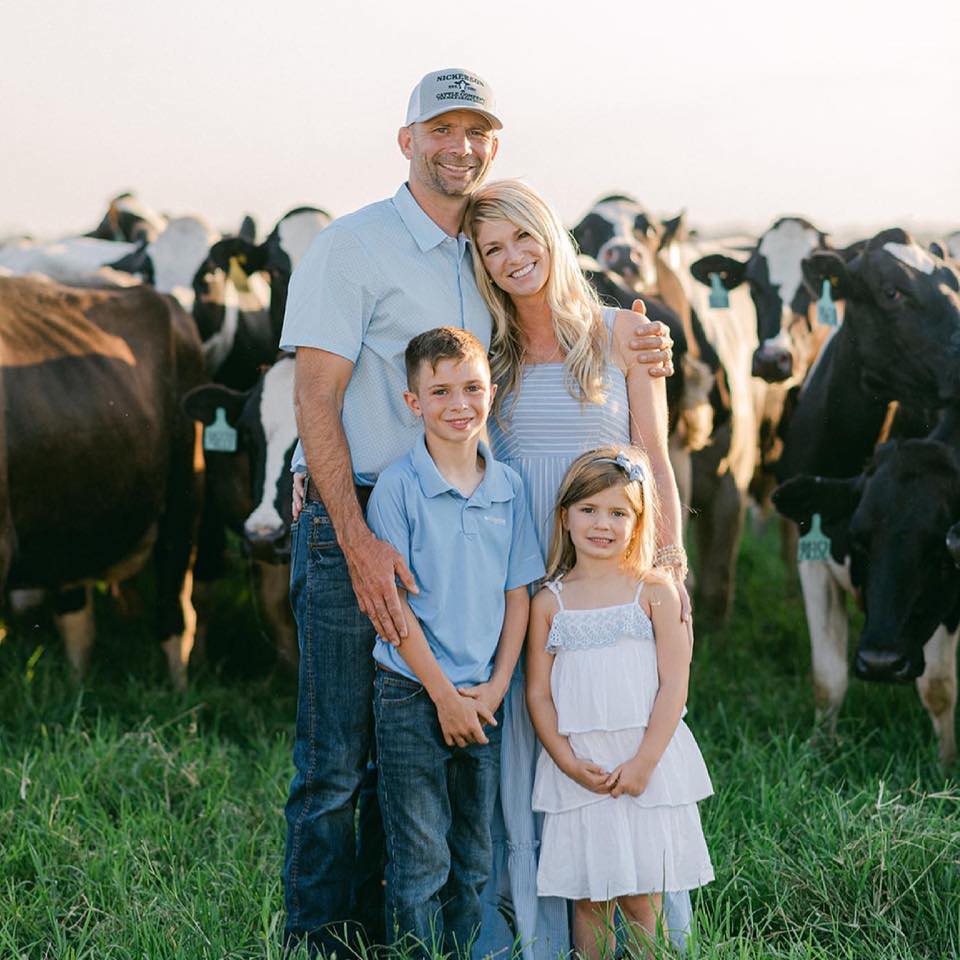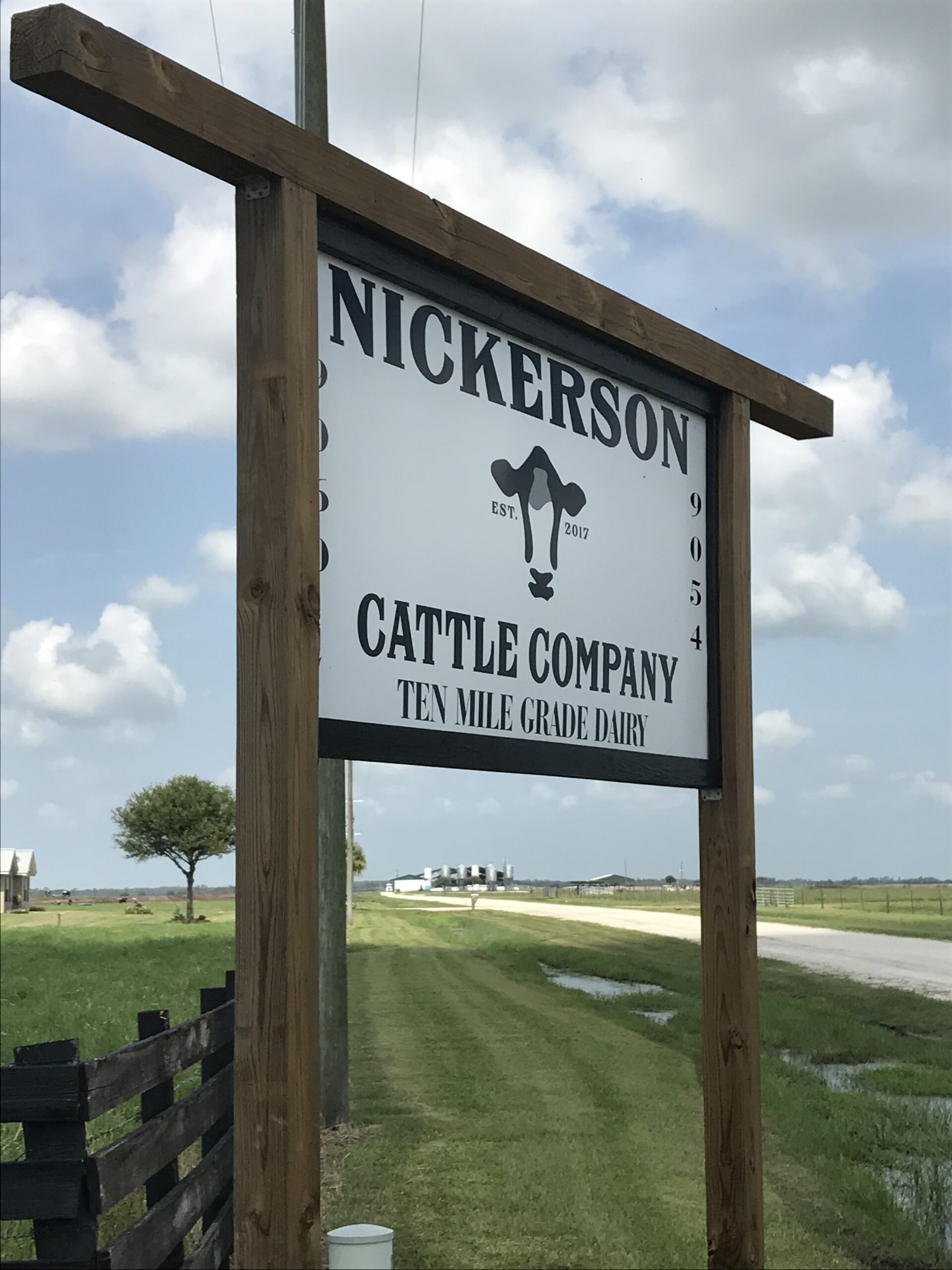- About
- Key Issues
Labor & Rural Policy
Sustainability
Animal Health
Nutrition & Food Safety
Labeling & Standards
- Programs & Resources
- Advocacy
- News
- Membership
- Events
- Stay Informed
- Contact
By Brittany Nickerson-Thurlow
Partner, Nickerson Cattle Company LLC
Southeast Milk, Inc.
My family’s farm started as a 27-cow dairy my grandparents financed. Over the generations, our family farms grew to a milking herd that included 5,000 cows and employed 40 people. From climate change and emissions control to immigration reform, federal policy needs to reflect these new realities.
As they have been for generations, dairy farms are an important part of Florida’s fabric. And as always, dairy farms overwhelmingly are family businesses — 95 percent of U.S.
But what a dairy farm is also has been changing. The average size of a U.S. dairy farm has risen from less than 130 cows 20 years ago to more than 300 cows today. In Florida, family dairy farms are even bigger — while 150-cow operations still exist in Florida, the average Florida dairy has more than 1,300 cows.
My own farm is part of this story. My family’s farm started as a 27-cow dairy my grandparents financed after my grandfather returned home from serving in the Army. In the 1960s, 27 cows was enough to raise one family with three sons. My dad and uncle decided to stay on that farm, buying two more small farms with their parents in the mid-1980s. Those three farms — and their 400 cows — provided for three farm families and a few employees.
I grew up on one of those farms — I live next door to it today. When my grandfather retired after our fourth farm was built in 2003, the milking herd across all operations included 5,000 cows and employed 40 people. As my generation graduated from high school and college, the then-four dairy farms split into two businesses. Today, those farms support six farm families, including my own, and 36 employees.
That’s a lot of change in three generations. And those changes are why, as part of the next farm bill and in Congress this year, members of Congress need to remember the needs of dairy farms that are still family-owned, but much more complicated in how they’re run. We’re seeing missed opportunities from Washington to make a meaningful difference. We’re hoping that this year, with elections and the work beginning on the next farm bill, we family dairy farmers might be heard.

One example of missed opportunities is a benefit that’s being distributed across dairy country right now: The federal Pandemic Market Volatility Assistance Program. This program meant to make up for revenues lost during the early days of the pandemic because of a change to the federal formula on how milk is priced. The Pandemic Market Volatility Assistance Program spends $350 million compensating farmers for losses of $750 million.
Unfortunately, while it’s well-intentioned, the program caps compensation at an amount that doesn’t cover losses beyond what works out to the first 400 cows of an operation. That sounds like a way to help small, family farmers — but many family farms aren’t that small, and many farms have multiple operations that give them an edge in payments.
My cousins own three of our original four farms. Because of the rules, they were able to capture up to three times the Pandemic Market Volatility Assistance Program funds I received, despite the fact that my single-family farm produces more milk — and thus lost more money — than their three together. Given the average size and mixed demographics of a Florida dairy business, it’s easy to see how the effort falls short.
Another missed opportunity is climate change. U.S. dairy is a global leader in reducing agricultural emissions, with a target of carbon-neutrality by 2050. Federal policy could better help dairies of all sizes transition to an even more sustainable future. While smaller farms play an important role in sustainability, the fact is that larger ones can make a big difference. Farms like ours are already part of the solution — we graze our cows on grass pasture that’s sequestering carbon in our soil and absorbs carbon from the atmosphere 365 days a year. We also recycle all our water, and we re-use the manure from our cows as fertilizer. We could be an even larger part of the solution if policies catch up to our promise.
Farmers also need immigration reform. Our current immigration system forces many high-quality workers into the shadows, making it impossible for families and businesses to plan ahead. Immigration policy often gets caught up in emotional debates that have nothing to do with farming — but lower-hanging fruit could be harvested through changes to visa programs that would make a temporary foreign workforce more workable for dairy.
These are only some of the many challenges dairy farmers face — everything from animal care to environmental stewardship is part of what makes a family farm work. And there’s a lot of work to do. Family dairies are still doing what we do best — sustainably providing nutritious products to America and the world. Federal officials need to adapt to changes in how that’s done to make sure the dairy industry, and the communities they serve, continue to thrive.
This story was originally published in the Tampa Bay Times on March 8. Click here for the post and visit www.tampabay.com for more information.
